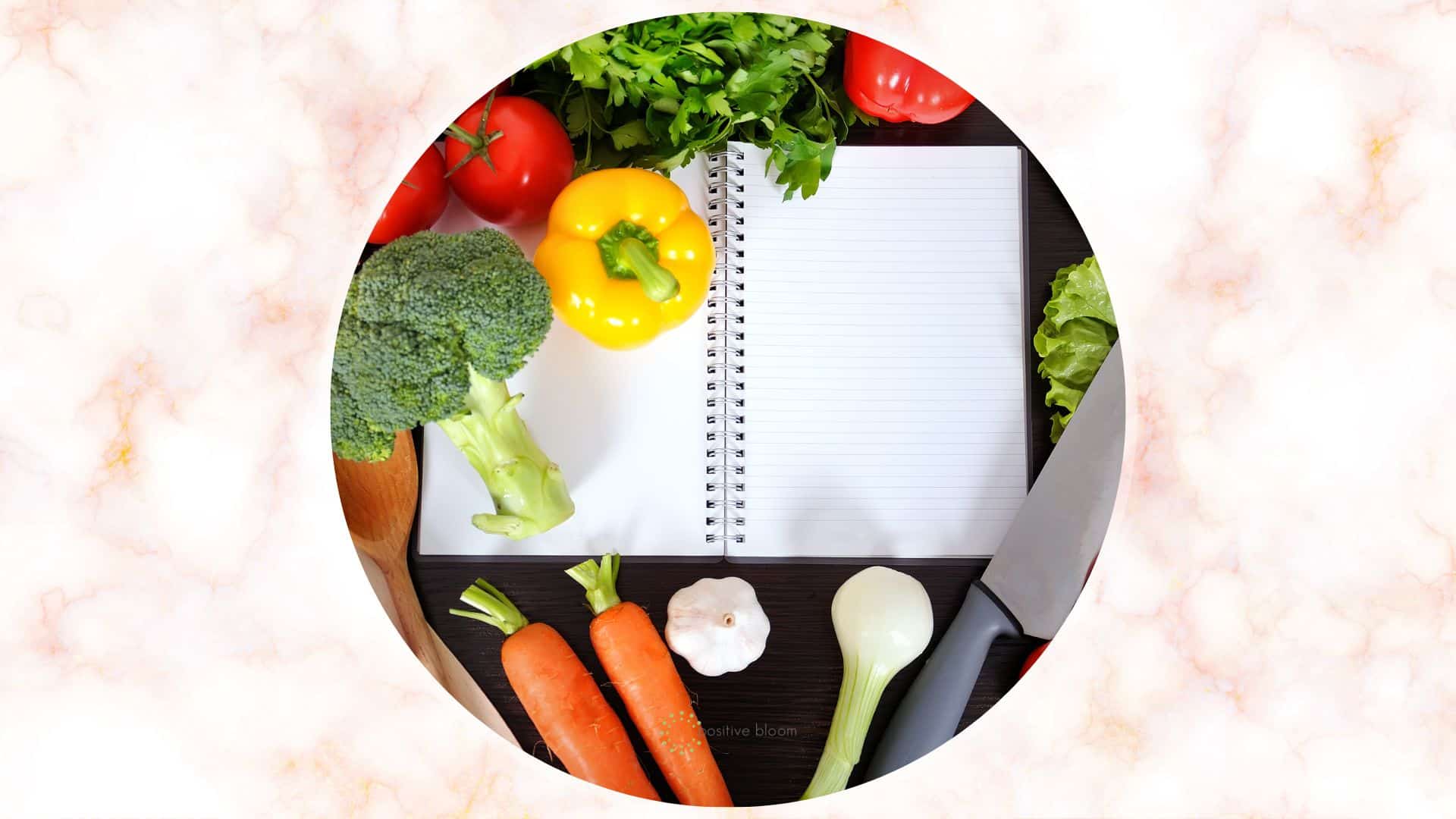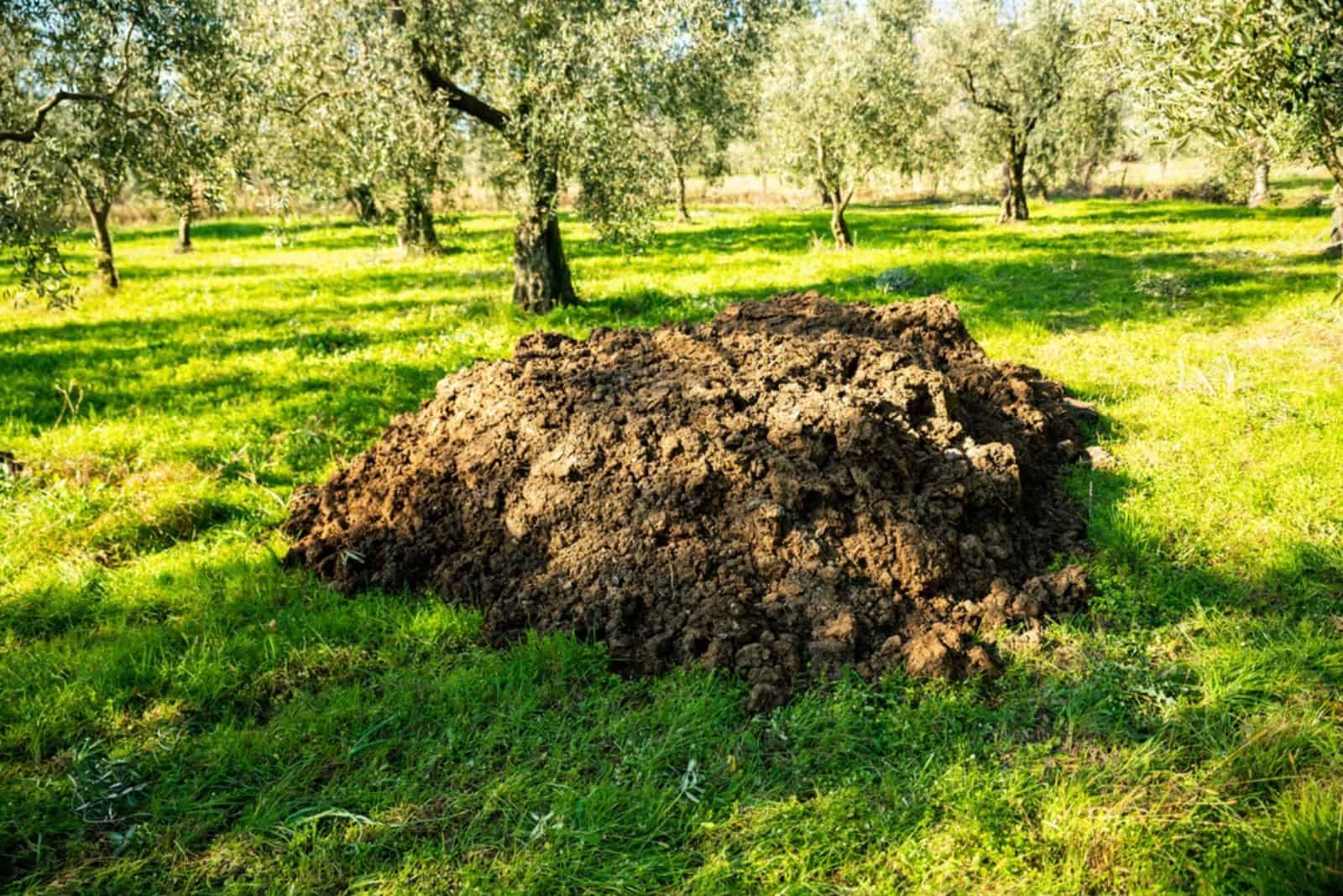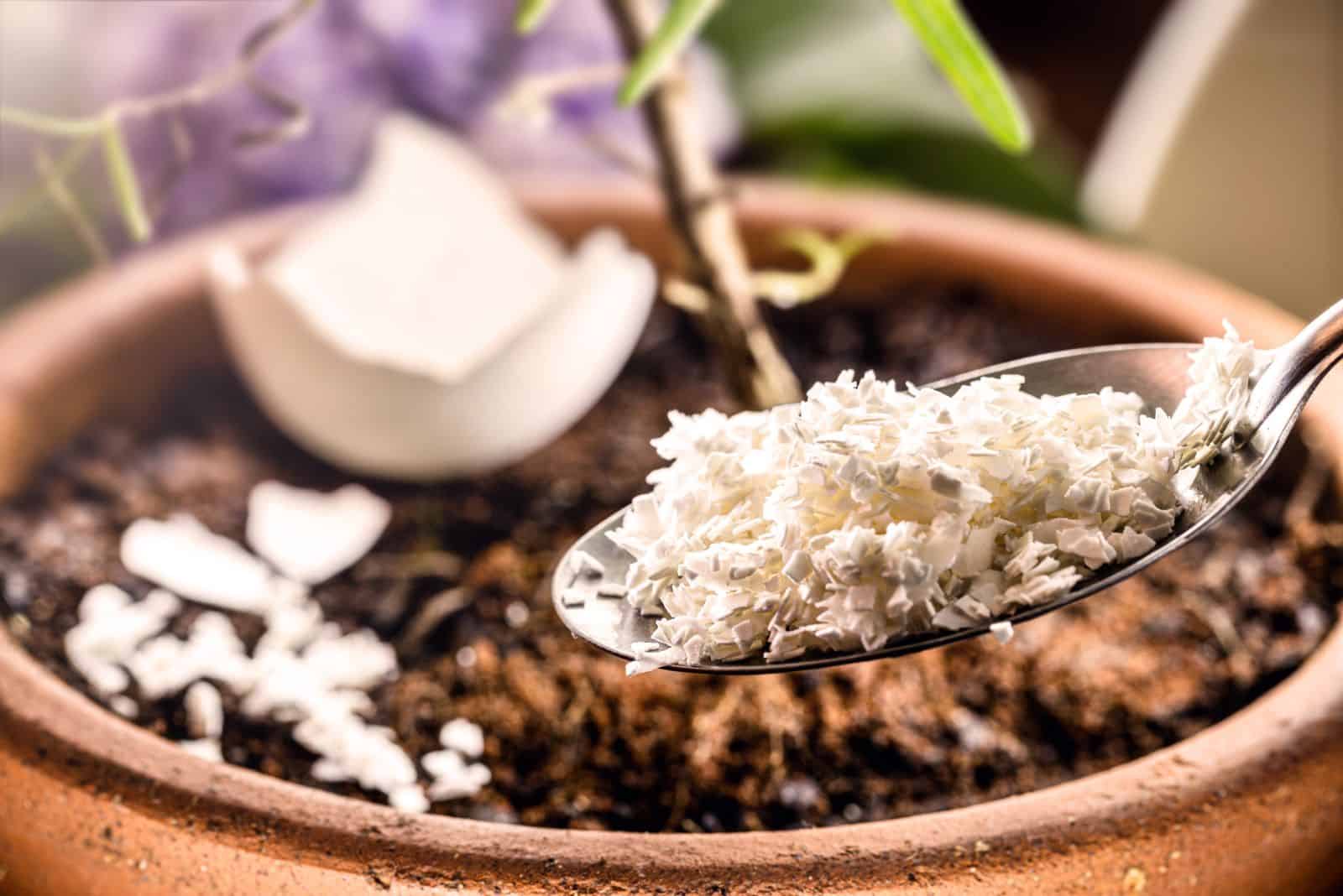Many plants require certain amounts of nitrogen, phosphorus, and potassium, which are macronutrients essential for their growth, root development, flowering, etc.
Phosphorus, the base element for this article, affects flowering and fruiting, proper plant growth, photosynthesis, etc., so it’s not surprising that many species require additional amounts of this mineral.
Therefore, we decided to bring you five amazing recipes for making homemade phosphorus fertilizer, including some plants that need it the most, as well as some signs that your green buddy might be lacking this nutrient.
We’ll also bring some tips and tricks for replenishing the phosphorus in the substrate quickly if a soil test shows that this mineral is severely lacking.
Let’s begin!
5 Recipes For Homemade Phosphorus Fertilizer
The best sources of phosphorus are definitely bone meal and phosphorus compost, but you can also use manure, banana, and eggshell fertilizers to increase the level of this nutrient in your growing medium.
However, we do have to mention that homegrown plants don’t typically require that much additional phosphorus since there’s plenty of it in soil and well-balanced mediums. (1)
But if, for instance, you have a young hummingbird bush plant (which requires plenty of phosphorus), you can add some of this nutrient to promote its extensive root growth.
Now let’s learn how to make our own phosphorus fertilizers!
Bone Meal Fertilizer
Bone meal is one of the richest phosphorus sources, and you can use animal bones to make it instead of throwing them away.
Step 1. The first thing you need to do is clean the bones of all meat and cartilage. You can do this by cooking the bones for at least 6 hours. Chicken and turkey bones require about 6 hours, whereas thicker ones need more cooking.
Step 2. Smash the bones a bit and then place them in your dehydrator. You can also blend the bones first and then dehydrate them, but we find this method to be more messy so we don’t use it.
Step 3. Blend the dehydrated bones into dust. If your blender cannot pulverize the bones to the desired consistency, you can always use a pestle and mortar to break them down into dust particles.
Once you make it, you can add bone meal to compost, work a handful into the soil, or add it to your potting medium.
Here are some more useful tips for making and using this organic plant food:
Banana Fertilizer
Banana peel is incredibly rich in potassium, but it also contains a certain amount of phosphorus, which makes it an excellent flower booster.
You can dehydrate it in the sun until it turns black or place it in an oven, blend it, and use the dust as a slow release fertilizer.
You can also make a banana tea suitable for plants by submerging the peels in lukewarm water. All the pieces have to be under water or else they will rot.
Leave the banana skin in water for a week. Dilute about a cup of banana peel tea in a gallon of water and irrigate or spray your green buddies with it.
Eggshell Fertilizer
When making eggshell fertilizer, it is essential to clean and dehydrate the eggs. You can do this by placing them in an oven for about 2 minutes at 400°F. This will ensure that the salmonella bacteria are dead and won’t spread in your garden.
You can also place the tray with eggs outside in direct sunlight for an entire day. After they dry out, place them in a blender and make a powder.
You can use the eggshell dust in various ways. For instance, you can mix it with some vinegar or lemon juice to make calcium more available to your plants, or add it to your compost to increase calcium and phosphorus levels.
You can mix the egg shell powder with boiling water, cover it, and mix it every day for a week. Afterwards, water your plants with the solution.
In this video, you can see how to make and use eggshell fertilizer:
Manure
Animal manure is an excellent source of nitrogen, but this material can also contain higher levels of phosphorus, especially cow and rabbit manure.
If you can get your hands on these ingredients, you can add them to your compost or directly to the soil before planting.
Amend the soil with manure in fall or early winter if you live in a warm region, and it will break down and provide the growing medium with nutrients without burning the plants’ roots.
Finally, you can also age the manure by keeping it outside, or you can pair it with carbon-rich materials such as straw, cardboard, etc. The sun will heat it up and you’ll be able to use it in 3-6 months, depending on your climate.
Phosphorus Compost
You can incorporate all the ingredients we mentioned above to make your own phosphorus compost for a sticky monkey flower plant or any other flowering plant or bush in your backyard.
If you don’t have the time to dehydrate and process banana peels or eggshells, you can simply add them to your composting bin or pile.
Bones you will have to dehydrate and pulverize, but you can also sprinkle some dust onto your compost heap if you don’t want to bother with measuring and diluting it.
Other phosphorus rich ingredients you can use to make your compost include mushrooms and grains.
Simply add all these ingredients to the pile together with nitrogen and carbon-rich ingredients such as manure, coffee grounds, straw, leaves, grass clippings, etc.
Add some water, turn it regularly, and you’ll have a phosphorus-rich compost in about 3-6 months.
Which Plants Need Phosphorus-Rich Fertilizers?
All plants require phosphorus for proper growth and development, but some species, such as legumes, lettuce, and fruiting trees, need higher amounts of this nutrient.
Flowers such as the shampoo ginger lily also benefit from high phosphorus fertilizers since this mineral promotes flowering and fruiting.
On the other hand, leafy plants and houseplants don’t need large amounts of this nutrient unless their growing medium is deficient.
In fact, if you feed these species with phosphorus-based fertilizers, it might kill your plant. Too much phosphorus in the growing substrate will make your plant unable to absorb other nutrients such as zinc, copper, and calcium.
Signs Your Plant Has A Phosphorus Deficiency
How can you tell if your plant needs more phosphorus?
Well, one of the first symptoms of phosphorus deficiency is leaf discoloration. It first affects the older foliage, which may turn darker, blue-green, or even lose their color and become pale due to severe lack of phosphorus.
Another common symptom is reddish or purple discolorations caused by the synthesis of anthocyanins (purple pigment). Younger leaves look healthy but are usually small and underdeveloped.
Finally, lack of phosphorus in the soil may lead to a lack of lateral branching (plants producing shoots), so the roots develop disproportionately. (2)
A Quick Way To Replenish Phosphorus
If you notice any symptoms of phosphorus deficiency, the first thing you should do is test the soil to see whether you’re really dealing with this issue.
If that’s the case, you should act immediately and add quick-release phosphorus-rich fertilizer or phosphate rock to replenish phosphorus.
Unfortunately, homemade fertilizers are either slow-release or not strong enough to help in this situation, so they’re not the best choice.
On the other hand, you can use them as a preventive measure and avoid getting into a situation where your soil might be phosphorus deficient.
However, it is always better to prevent this issue from happening in the first place, so you should add phosphorus-rich fertilizers before planting your flowers, fruits, or veggies.
Of course, always test your growing medium because your plants might not even need this essential mineral. For instance, the recommended amount of phosphorus is between 35-50 ppm, so always keep the levels of this nutrient somewhere in between. (3)
Final Thoughts
This article examined five excellent recipes for homemade phosphorus fertilizer. You can use them on their own or combine them with other homemade fertilizers rich in nitrogen or potassium for holistic feeding.
However, many plants don’t require that much phosphorus, or the soil is already rich in this nutrient, so don’t use it unless you’re 100% sure you have to (always test the growing medium beforehand).
For instance, some signs that your green buddy requires more phosphorus are leaf discoloration (dark, blue-green, pale, or reddish-purple shades) on older leaves, healthy but small and stunted young leaves, and lack of lateral branching.
In that case, homemade fertilizers might not be of too much help as they don’t release nutrients fast enough or are too weak. Luckily, you can use phosphate rock or other commercially available phosphorus fertilizers.
Good luck, and until next time!
[sp_easyaccordion id=”18594″]





